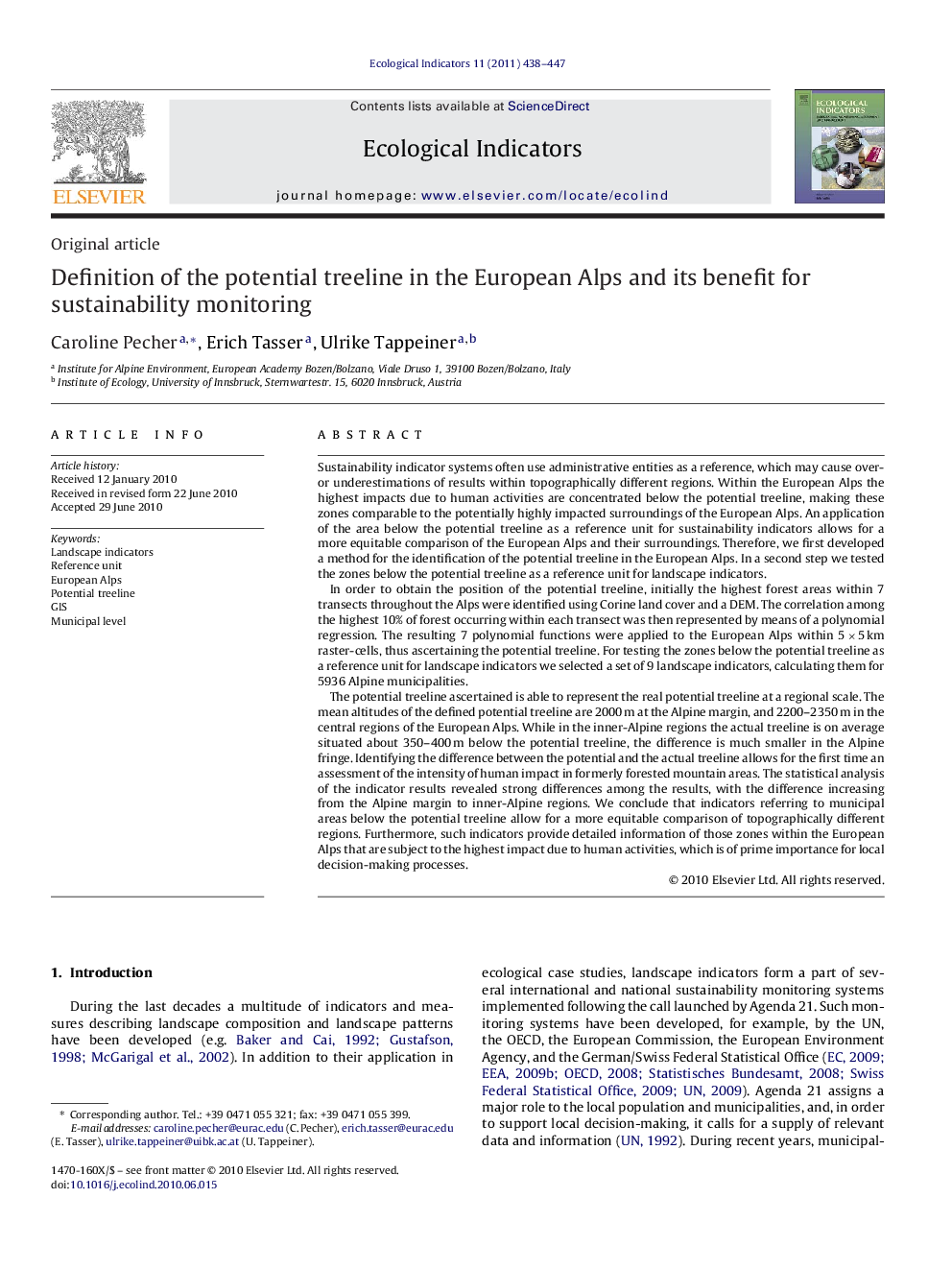| کد مقاله | کد نشریه | سال انتشار | مقاله انگلیسی | نسخه تمام متن |
|---|---|---|---|---|
| 4374121 | 1303162 | 2011 | 10 صفحه PDF | دانلود رایگان |

Sustainability indicator systems often use administrative entities as a reference, which may cause over- or underestimations of results within topographically different regions. Within the European Alps the highest impacts due to human activities are concentrated below the potential treeline, making these zones comparable to the potentially highly impacted surroundings of the European Alps. An application of the area below the potential treeline as a reference unit for sustainability indicators allows for a more equitable comparison of the European Alps and their surroundings. Therefore, we first developed a method for the identification of the potential treeline in the European Alps. In a second step we tested the zones below the potential treeline as a reference unit for landscape indicators.In order to obtain the position of the potential treeline, initially the highest forest areas within 7 transects throughout the Alps were identified using Corine land cover and a DEM. The correlation among the highest 10% of forest occurring within each transect was then represented by means of a polynomial regression. The resulting 7 polynomial functions were applied to the European Alps within 5 × 5 km raster-cells, thus ascertaining the potential treeline. For testing the zones below the potential treeline as a reference unit for landscape indicators we selected a set of 9 landscape indicators, calculating them for 5936 Alpine municipalities.The potential treeline ascertained is able to represent the real potential treeline at a regional scale. The mean altitudes of the defined potential treeline are 2000 m at the Alpine margin, and 2200–2350 m in the central regions of the European Alps. While in the inner-Alpine regions the actual treeline is on average situated about 350–400 m below the potential treeline, the difference is much smaller in the Alpine fringe. Identifying the difference between the potential and the actual treeline allows for the first time an assessment of the intensity of human impact in formerly forested mountain areas. The statistical analysis of the indicator results revealed strong differences among the results, with the difference increasing from the Alpine margin to inner-Alpine regions. We conclude that indicators referring to municipal areas below the potential treeline allow for a more equitable comparison of topographically different regions. Furthermore, such indicators provide detailed information of those zones within the European Alps that are subject to the highest impact due to human activities, which is of prime importance for local decision-making processes.
Journal: Ecological Indicators - Volume 11, Issue 2, March 2011, Pages 438–447